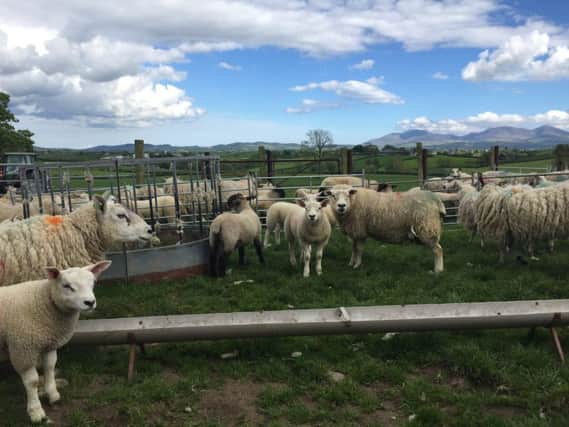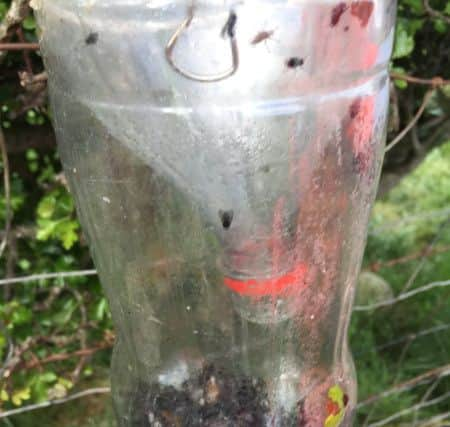Parasite information saves costs and boosts growth rates


In 2016, Zoetis established a network of ‘Parasite Watch’ sentinel farms across the UK to support parasite control decisions. They have extended the remit this year through the inclusion of more farms and an upgrade in technology to provide farmers with insight into stomach worms, Nematodirus, liver fluke and fly burdens in their particular area.
Veterinary Consultant with Zoetis, Aurelie Moralis outlines the information provided:
Advertisement
Hide AdAdvertisement
Hide AdGastro-intestinal worms – regular Faecal Egg Counts (FECs) and growth rate monitoring to check for the onset of parasitic gastro-enteritis.


Nematodirus – regular FECs, weather data and other sources to give an indication of disease risk on sentinel farms.
Liver Fluke – using risk and weather data, coupled with regular sampling on Parasite Watch farms, to provide early notice of predictable threats.
Flies – data from Parasite Watch Farms to prompt early warnings, possibly before it is noticeable around livestock, that fly populations, are multiplying quickly.
Advertisement
Hide AdAdvertisement
Hide AdAurelie commented: “Overall, the aim of Parasite Watch is widespread evidence-based decisions to treat or indeed not to treat. It informs vets, SQP’s and farmers if they are able to reduce treatments or whether the impact on production, given the parasite challenge, is likely to be too high a risk.


“We have created an interactive website at www.parasitewatch.co.uk that allows farmers to get to know our Parasite Watch farms and the challenges they’re currently facing. They can check back regularly and follow us on Twitter @sheep_farmers and Facebook SheepfarmersUK for updates and commentary on the findings.”
The Northern Ireland ‘Parasite Watch’ farmer is Ian Martin who farms just outside Ballyroney, with a lovely view of the Mourne mountains. Outlining his sheep enterprise he said: “The majority of land, which is about 80 acres, is around the home farm where we lamb all the ewes and then have two smaller out farms for grazing later in the season. We run around 185 ewes, mainly Texel/Mule crosses which lambed at the end of February/beginning of March and 70 ewe lambs which lambed down at the beginning of April, some with triplets! We mainly use a Texel ram and a Beltex or Suffolk ram to a lesser extent.”
Commenting on his experience with the Parasite Watch scheme to date, Ian said: “It does take time to gather the ewes and lambs in to collect the dung samples, but I would rather take the time now to find out if they need wormed rather than worming them unnecessarily. Last year we dosed the lambs a lot more than to date this year, so we have saved money and time spent dosing on a regular basis when it was not necessary.”
Advertisement
Hide AdAdvertisement
Hide AdAurelie advises farmers: “In addition to looking at risks in your area by using the Parasite Watch map, you should also be using faecal egg counts as a monitoring tool, as well as monitoring growth rates.”
Preventing resistance
Sheep farmer Peter Baber, who is also one of the 18 farms involved in Parasite Watch, believes long-term targeting of wormers has helped control the development of resistance on his farm.
He farms 1,000 Exlana, Suffolk and Texel ewes at Weir Park Farm, Christow, Exeter, and is also chairman of Sustainable Control of Parasites in Sheep (SCOPS).
He has been taking faecal egg counts for the past 10 years and will only worm if results indicate there is a problem.
Advertisement
Hide AdAdvertisement
Hide AdLast year he was pleased to find that the white BZ group worked 100% on his farm early in the season for Nematodirus.
“It implies we don’t have blanket resistance to BZ’s, which is good news and could be an indication of how successful using faecal egg counts are.”
Mr Baber says drenching is a double edge sword. “Every time you drench you are essentially moving the whole farm down the road to resistance. You have to work out whether the group or animal in question is going to really benefit from the drench.”
Mr Baber says if he has a faecal egg count that comes back showing medium risk, he may go out and drench 20% of the flock. “It shows there are some worms there, so I will worm those animals most at risk.
Advertisement
Hide AdAdvertisement
Hide Ad“Taking faecal egg counts builds a picture of what is happening on farm and will help preserve the useful lifetime of some drenches,” he adds.
How to use
Parasite Watch
The aim of Parasite Watch is to show what is happening across the UK using an interactive map found at www.parasitewatch.co.uk. Parasite data from each of the farms will be updated regularly, which will allow farmers to see if there are spikes in certain parasites throughout the year in their area and enable them to take appropriate action.
To use the map, click on a farm in your area and details of any parasites that have been found as well as when they were detected will be displayed. Test results will be online within hours of the test being taken.